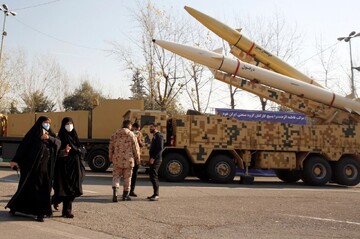The Islamic Revolutionary Guard Corps (IRGC) has emerged as a prominent actor in cyber warfare, utilizing advanced digital capabilities to achieve its strategic objectives domestically and internationally. Over the past decade, the IRGC has significantly expanded its cyber infrastructure, targeting adversaries, undermining critical infrastructure, and suppressing dissent. This asymmetric approach allows Iran to exert influence and destabilize rivals without engaging in direct military conflict.
This report delves into the IRGC’s cyber warfare capabilities, strategies, and operations, as well as the global security implications of its digital activities.
1. The IRGC’s Cyber Warfare Program: Origins and Development
A. Early Investments in Cyber Capabilities
• The IRGC began developing cyber capabilities in the early 2000s as part of Iran’s broader strategy to counter perceived threats from the United States, Israel, and regional adversaries.
• The 2009 Green Movement protests marked a turning point, with the IRGC expanding its digital capabilities to monitor, suppress, and track domestic opposition.
B. Institutional Structure
• Iran’s Cyber Defense Command, heavily influenced by the IRGC, coordinates state-sponsored cyber activities.
• Key units, such as the Basij Cyber Council, focus on cyber espionage, disinformation, and hacking operations.
2. Objectives of the IRGC’s Cyber Warfare
A. Domestic Surveillance and Control
• Monitoring Opposition: The IRGC uses cyber tools to surveil and suppress activists, journalists, and political dissidents, leveraging advanced spyware and hacking techniques.
• Censorship: The IRGC plays a central role in enforcing internet blackouts and restricting access to global platforms like Twitter, YouTube, and Facebook.
B. Regional Destabilization
• The IRGC employs cyber operations to undermine adversaries in the Middle East, including Saudi Arabia, Israel, and the UAE, by targeting infrastructure and spreading disinformation.
• Cyber campaigns support Iran’s proxies, such as Hezbollah and the Houthis, by coordinating propaganda and digital attacks.
C. Global Influence and Disruption
• Espionage: The IRGC conducts cyber espionage to steal sensitive data from governments, businesses, and research institutions worldwide.
• Sabotage: Its cyber units target critical infrastructure, including energy, transportation, and financial systems, to disrupt global security.
3. Key Cyber Operations Attributed to the IRGC
A. Shamoon Malware Attacks (2012, 2016, 2018)
• The IRGC-linked Shamoon malware targeted Saudi Aramco, erasing data on 30,000 computers and causing widespread disruption.
• These attacks demonstrated the IRGC’s ability to cripple critical infrastructure.
B. U.S. Financial Sector Attacks (2011–2013)
• The IRGC conducted Distributed Denial of Service (DDoS) attacks against major U.S. banks, disrupting online banking services.
• These operations aimed to retaliate against sanctions and intimidate financial institutions.
C. Phishing and Espionage Campaigns
• The IRGC has targeted journalists, activists, and Iranian diaspora communities with sophisticated phishing campaigns to steal personal data and compromise networks.
• These operations extend to foreign governments and corporations, collecting intelligence to further Iran’s strategic goals.
D. Targeting Israel
• The IRGC routinely engages in cyberattacks against Israeli infrastructure, including water systems, financial institutions, and government websites.
• These attacks align with Iran’s broader objective of weakening Israeli security and influence.
4. Tools and Tactics Used by the IRGC
A. Malware and Ransomware
• The IRGC uses custom-built malware, including Shamoon, and off-the-shelf ransomware to target adversaries and generate revenue.
B. Disinformation Campaigns
• By creating fake social media accounts and websites, the IRGC spreads propaganda and amplifies pro-regime narratives while discrediting opposition voices.
• Disinformation is also used to influence elections and political discourse in target countries.
C. Phishing and Social Engineering
• The IRGC employs sophisticated phishing schemes to gain access to sensitive information from individuals and organizations.
D. Denial-of-Service Attacks
• DDoS attacks are a frequent tactic used by the IRGC to overwhelm and disable critical systems, disrupting operations in targeted nations.
5. Global Security Implications
A. Threats to Critical Infrastructure
• The IRGC’s cyber capabilities pose a direct threat to energy grids, transportation networks, and financial systems globally.
• Successful attacks could disrupt economies and endanger lives.
B. Escalation of Regional Conflicts
• Cyber operations by the IRGC often escalate tensions in the Middle East, with retaliation from targeted countries increasing the risk of broader conflict.
C. Undermining Democracy
• The IRGC’s disinformation campaigns undermine trust in democratic institutions by spreading false narratives and influencing public opinion.
D. Expanding Cyber Proliferation
• By supporting proxies with cyber tools and training, the IRGC contributes to the proliferation of offensive cyber capabilities among non-state actors.
6. International Responses to the IRGC’s Cyber Threat
A. Sanctions
• The U.S. and its allies have imposed sanctions on individuals and entities linked to the IRGC’s cyber operations.
• These measures aim to restrict the IRGC’s access to technology and financial resources needed for cyber activities.
B. Cyber Defense Collaboration
• Nations targeted by the IRGC are strengthening cybersecurity frameworks and sharing intelligence to counter Iranian cyberattacks.
• Regional alliances, such as between Israel and the UAE, enhance collective defense against IRGC-linked threats.
C. Disruption of IRGC Networks
• Western countries have launched counter-cyber operations to dismantle IRGC infrastructure and disrupt its activities.
7. Recommendations for Addressing the IRGC’s Cyber Threat
A. Enhance Global Sanctions Enforcement
• Expand and rigorously enforce sanctions on IRGC-linked entities, ensuring no loopholes for technology transfers.
B. Strengthen Cybersecurity Infrastructure
• Governments and private sector organizations must invest in advanced cybersecurity tools to defend against IRGC-linked threats.
C. Increase Public Awareness
• Educate individuals and organizations about IRGC phishing campaigns and disinformation tactics to reduce their effectiveness.
D. Foster International Collaboration
• Build coalitions among nations to share intelligence, coordinate responses, and establish norms for addressing state-sponsored cyber threats.
Conclusion
The IRGC’s cyber warfare capabilities represent a growing threat to global security, targeting critical infrastructure, spreading disinformation, and destabilizing regions. As the IRGC continues to expand its digital operations, addressing this threat requires coordinated international action, robust cybersecurity defenses, and sustained pressure on Iran’s cyber networks. By confronting the IRGC’s cyber tactics, the global community can safeguard critical systems, protect democratic institutions, and promote stability in an increasingly interconnected world.
Join Our Newsletter!
Stay informed with the latest updates, news, and ways to take action in the fight for justice and global security. Sign up now to get updates delivered straight to your inbox!





